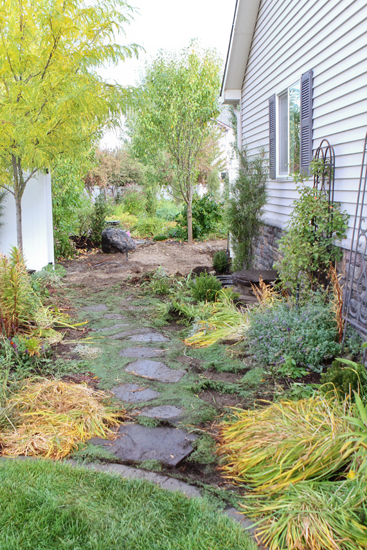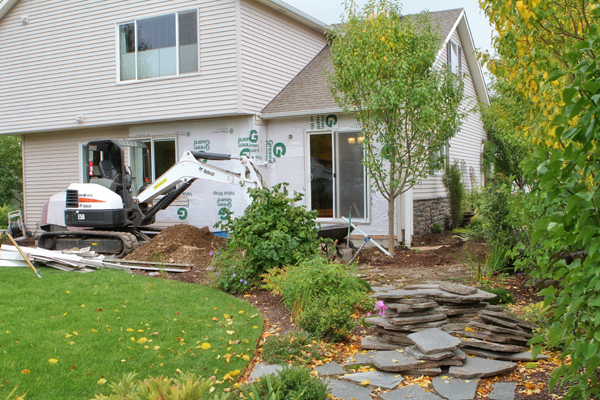For the focal point of my main backyard garden bed, I have been waffling between a 'Royal Purple' smoke tree (or smoke bush, Cotinus coggygria) and a 'Red Dragon' contorted filbert (Corylus avellana). After growing both burgundy-leafed plants for a while, I thought I'd compare and contrast the two. Above is my Royal Purple smoke tree in late summer.
Royal Purple (zones 4-8) grows moderately quickly to 15 feet tall and 10-12 feet wide, but many gardeners keep it smaller by pruning back to the ground each spring. Hard pruning reduces or eliminates the 'smoky' flowers (above) in spring, which therefore reduces the amount of pollen released to trouble allergy-sufferers. I don't have room for a full-sized specimen, so I plan to prune each spring.
In fall Royal Purple turns gloriously red before shedding its leaves. Its bare branches aren't showy, so it fades into the background in winter.
In contrast, winter might be the best time of year for a 'Red Dragon' contorted filbert (zones 4-8). The twisted branches are beautiful when bare, and in late winter they break out with catkins that sway in the wind. The photo above actually shows one of my regular, non-red contorted filberts, as I don't have a photo of Red Dragon catkins yet.
The new spring leaves on Red Dragon are almost black, and then they fade through the season. I learned the hard way that full sun in summer burns the leaves to a nasty orange-green-brown color, so this fall I gave up on full sun and transplanted my Red Dragon to a part shade spot.
Red Dragon grows moderately slowly to 6-8 feet tall and wide. It has a more upright shape - stretching out like dragon wings - than its green cousins. In the photo above you see the mix of green older leaves and burgundy new leaves that cover the plant through the summer.
Fall color on Red Dragon is not very showy, as you see above, but those falling leaves reveal the lovely twisting stems for the rest of the dormant season.
If you find yourself deciding between these two plants for a focal point, the amount of sun it will receive is an important factor. Either will do fine with morning sun and afternoon shade, but you'd better choose a Royal Purple smoke tree if you have full sun, and for heavier shade you'd be wise to go with the Red Dragon contorted filbert. You'll have more pruning to keep Royal Purple to a shrub size, but it has better fall color than Red Dragon. The twisty branches and catkins make Red Dragon the winner as far as year round interest, though. Other large shrubs in this size range with dark leaves include 'Black Lace' elderberry (Sambucus, I grow it and like it) and 'Diablo' ninebark (Physocarpus, I don't grow it because the pink/white flowers aren't attractive to me).













